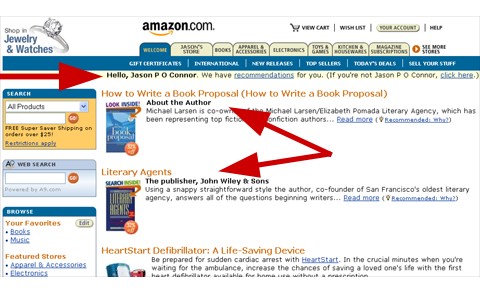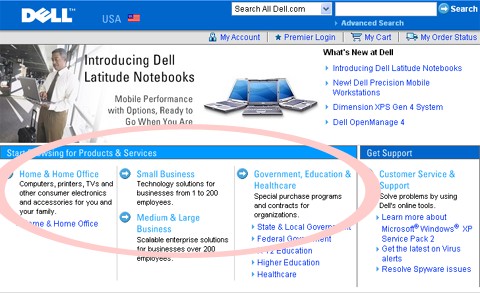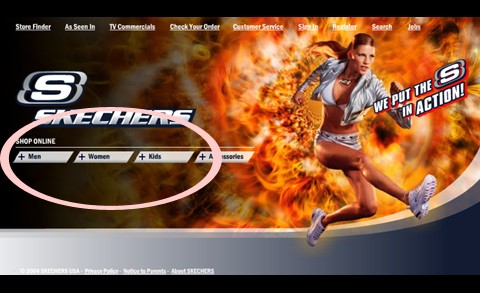One-to-one marketing's meaning is simple: Treat different people differently.
One-to-one marketing is communications that are anticipated, relevant and personalized. Messages that are expected—because they were in some way requested, and are furthermore pertinent and individual—succeed in handling diverse people distinctively.
Which message would you be more amenable to: a billboard in Times Square or a Web site that uses your first name and offers content that's applicable to your lifestyle, preferences and interests?
By making messages anticipated, relevant and personal, the marketer is creating an advantage over old-school, 20th-century "interruption" marketers.
This approach to marketing is called one-to-one because each person (or group) receives a special message tailored specifically to him or her. Instead of a marketer sending out the same message to the masses (one-to-many), the marketer sends out a unique message to each person or group (one-to-one).
One-to-one marketing is also called permission marketing because the consumer or business gives permission to the company to communicate with them. Therefore, the message is anticipated.
The Web is the perfect vehicle for delivering one-to-one messages. But why do people visit a Web site in the first place? There are five main reasons:
- To learn via information and content
- To belong to a community
- To be interactive—polls, forums, to view Flash movies that can instruct
- To buy
- To get free stuff—white papers, downloads, consultations
A Web site can be tailored to give a unique experience to each visitor, based on the visitor's unique preferences and interests. Current Web technology allows sites to "recognize" each visitor, search their databases and pull up content that best suits each person, thereby treating different people differently.
Here's a simple business-to-consumer (B2C) example of one-to-one site marketing at work. Probably one of the best B2C Web companies is Amazon.com (www.amazon.com). And one big reason it is successful is that it practices one-to-one marketing.
To buy a book from Amazon, a consumer is first required to fill out an HTML form that asks specific information, thereby creating a profile. Each time that person revisits the Web site, the site recognizes the consumer and serves tailored content to his or her interests.
How does the site know those interests in the first place? By taking note of the books or products that are viewed during each session and by taking note of previous purchases.
Give it a try. Go to Amazon.com, create a profile and buy a book. Then revisit Amazon.com again later and notice what books show up on the home page.
Chances are the books are totally different from the ones that show up when I go to Amazon.com. The books that show up for you will be related to the book you previously bought. Furthermore, because the site recognizes me, it actually greets me by name.
Here's what my Amazon.com home page looks like:

One-to-one communications via the Web are just as effective for B2B.
For instance, Dell Computer's homepage (www.dell.com) is divided into four main sections for browsing products and services: Home & Home Office; Small Business; Medium & Large Businesses; and Government, Education & Healthcare. Who you are will determine which section you enter. And, obviously, the content in each section differs.

In fact, the marketing messages will be completely different as well. This is a perfect example of harnessing the power of the Web to treat different people differently.
Another good example of this is the Skechers Web site (www.skechers.com). On its home page, there are three big buttons in the middle of the page: Men, Women and Kids.

What Dell and Skechers did was to group people into various buckets, depending on their needs, and then developed a special message for each group. They created specific paths, or tracks, tailored to each group.
The key is to determine in advance who your visitors are going to be—who your audience will be. The next step is to break the audience into clusters along common lines. Examples are "men, women, and children," or "new site visitors and repeat visitors," or "people who have purchased from you before and new customers."
Then, break your site up into sections that will contain a unique message for each of your clusters.
A picture begins to emerge of a one-to-one marketing Web site. These sites differentiate their visitors by grouping them based on commonalities. They offer different paths and site sections that are unique to each group. And they provide a different experiences for different visitors.
They also offer ways in which any site visitor can communicate with the organization, usually through HTML forms. By providing ways for visitors to teach you how to treat them, you are providing extra value. In other words, if all else is equal, and one site "knows" who I am because it asked me via an HTML form and thereby offers a customizable experience, but another site does not... guess which site I am more likely to visit?
A customizable experience can be achieved by allowing your site visitor to fill out a form to create a profile of themselves. We already touched on this regarding the Amazon.com site, but Yahoo (www.yahoo.com) offers the ability for site visitors to customize the page exactly how they want.
MyYahoo asks site visitors if they want to tailor their experience for subsequent visits. It asks them what types of information they want to see each time they log on. The choices include world news, business news, stock reports, weather, sports information and more.
Whether a Web site is as sophisticated as Amazon or a little less refined (like Dell.com), a one-one-one marketing Web site provides anticipated, relevant and personal information to each visitor.
It's anticipated because the visitor has filled out a profile or gone to a site section labeled for specific interests, so the site treats him or her differently from other visitors. It's relevant and personal because it speaks to each person's varying needs, desires, functions and preferences.
In short, a site that is anticipated to be relevant and personal to its visitors is going to be more successful in gaining traffic, keeping visitors, creating repeat visitors, creating sales leads and ultimately sales.
One-to-one marketing Web sites offer more value than other sites. Whether you're selling products or services, or whether you're selling to businesses or consumers, one-on-one principles give you the edge and move you from 20th-century to 21st-century marketing.



